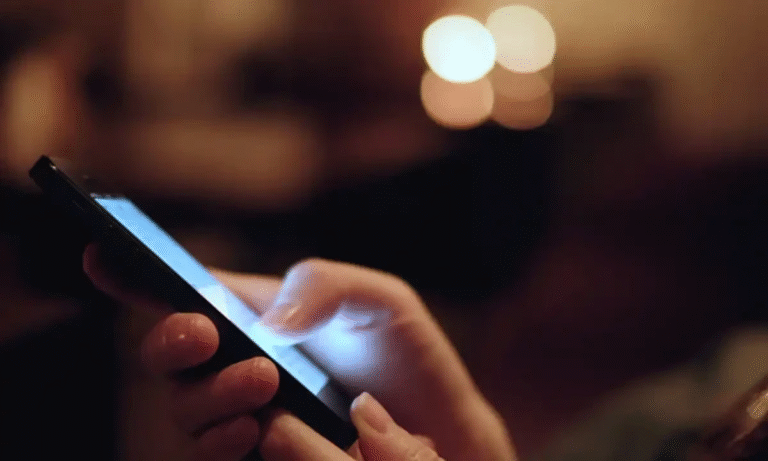The Complete Guide to Logo Design: From Basics and Principles to Trends, Strategy, and Real-World Examples
Logos are more than just decorative marks; they are powerful tools that represent a company’s identity, values, and promise to its customers. From the Nike swoosh to Apple’s bitten apple, logos have the ability to transcend language, geography, and even time. Designing an effective logo is both an art and a science—it requires an understanding of aesthetics, psychology, and branding strategy. In this guide, we’ll explore everything from the basics of logo design to modern trends, principles, strategies, and real-world examples of success (and failure).
Basics of Logo Design
What Makes a Good Logo?
A good logo is memorable, versatile, and aligned with a brand’s identity. According to the American Marketing Association, a logo should instantly communicate a brand’s values without explanation. Key attributes include:
- Simplicity: Overly complex logos are difficult to reproduce and remember.
- Memorability: Unique yet recognizable designs stick in consumers’ minds.
- Versatility: A good logo must work in different contexts—digital, print, merchandise, and signage.
- Timelessness: Fads fade quickly; a successful logo should last decades with minimal tweaks.
- Relevance: The design should reflect the industry and target audience.
What Are the Main Types of Logos?
Logos generally fall into several categories:
- Wordmarks (Logotypes): Text-based, like Google or Coca-Cola.
- Lettermarks (Monograms): Initials or abbreviations, like IBM or CNN.
- Pictorial Marks (Symbols): Iconic imagery, like Twitter’s bird.
- Abstract Logos: Geometric forms or shapes, like Pepsi’s globe.
- Mascots: Character illustrations, like KFC’s Colonel Sanders.
- Combination Marks: Text + symbol, like Adidas.
- Emblems: Text within a symbol or badge, like Starbucks or Harley-Davidson.
Why Is Logo Design Important for Branding?
A logo serves as the initial connection between a brand and its audience. Research highlighted in the Journal of Brand Management reveals that people form opinions about brands within just a few seconds, and logos play a key role in shaping those perceptions. An effective logo enhances brand recognition, builds credibility, and sets a business apart in competitive markets.
How Do Logos Influence Customer Perception?
Logos tap into psychology. Shapes, colors, and typography convey subconscious cues. For example:
- Rounded shapes suggest friendliness (think Disney).
- Sharp edges convey strength and authority (think Tesla).
- Blue evokes trust and stability (used by banks like Chase).
- Red signals excitement and energy (Coca-Cola).
Design Principles
What Are the Key Principles of Effective Logo Design?
Leading design authorities like AIGA (the professional association for design in the U.S.) highlight several non-negotiables:
- Balance: Symmetry and proportion ensure visual harmony.
- Contrast: Differentiating elements create impact.
- Alignment: Keeps design structured and professional.
- Consistency: Aligns with overall branding.
How Do Color Psychology and Symbolism Affect Logo Design?
- Red: Energy, passion, appetite.
- Blue: Trust, calm, professionalism.
- Green: Growth, sustainability.
- Black/Gray: Sophistication, authority.
- Yellow/Orange: Optimism, creativity.
Brands choose colors strategically. McDonald’s red and yellow stimulate appetite and excitement, while Apple’s minimalist gray and white convey sophistication and innovation.
What Role Does Typography Play in Logo Design?
Typography communicates personality:
- Serif fonts: Tradition and authority (The New York Times).
- Sans-serif fonts: Modernity and simplicity (Google).
- Custom lettering: Uniqueness and distinctiveness (Coca-Cola).
Typography must be legible at all scales, from a billboard to a smartphone icon.
How Important Is Simplicity in a Logo?
Simplicity is perhaps the golden rule. Complex logos may look attractive but fail in scalability, recognition, and reproduction. Think of the Apple logo—simple, iconic, and instantly recognizable even in silhouette. According to Atom.com’s research, younger demographics are especially drawn to minimalist redesigns, with softer colors and cleaner typefaces rated as 40% more professional compared to complex or aggressive logos.
Process & Workflow
What Are the Steps in the Logo Design Process?
Professional designers typically follow this workflow:
- Discovery: Understanding the client’s brand, values, and target audience.
- Research: Studying competitors and industry trends.
- Brainstorming: Generating ideas and rough sketches.
- Concept Development: Creating digital drafts.
- Refinement: Narrowing down designs, adjusting typography, colors, and forms.
- Presentation: Showing clients options with mockups.
- Finalization: Delivering files in multiple formats.
How Do Designers Brainstorm Logo Concepts?
Designers often use mood boards, sketching, and mind-mapping. They draw inspiration from the brand’s story, values, and culture. For example, a sustainable brand may use nature motifs, while a fintech startup may emphasize sleek, futuristic geometry.
How Do You Research Competitors Before Designing a Logo?
Competitive analysis ensures uniqueness. Designers evaluate competitors’ logos to avoid clichés and create differentiation. For instance, many tech companies use blue logos—so a startup might choose an unconventional color to stand out.
What Tools/Software Are Commonly Used for Logo Design?
Industry-standard tools include:
- Adobe Illustrator: Vector-based, best for scalable logos.
- CorelDRAW: Popular among some professionals.
- Figma & Sketch: For digital design collaboration.
- Canva: Widely used for beginners and small businesses.
Trends & Styles
What Are the Current Trends in Logo Design (2025)?
According to U.S. design agencies, current trends include:
- Minimalism & Flat Design: Clean, versatile, digital-friendly.
- Responsive Logos: Versions adapted for apps, websites, and print.
- Geometric & Abstract Shapes: Futuristic appeal.
- Dynamic Logos: Variations of logos that adapt to context (Google Doodles).
- Hand-drawn & Vintage Styles: Popular in artisanal and food industries.
How Have Logos Evolved Over the Years?
Logos have shifted from ornate to minimalist. Early 20th-century logos were detailed (e.g., intricate emblems). The digital age pushed simplicity due to screen limitations. For instance, Starbucks went from a detailed mermaid emblem to a cleaner, scalable green icon.
What Are the Differences Between Minimalist and Complex Logos?
- Minimalist: Easy recognition, scalability, timeless (Nike).
- Complex: Can convey depth and tradition but risk being dated (coat-of-arms style).
What Industries Prefer Certain Logo Styles?
- Tech: Minimalist, futuristic (Google, Microsoft).
- Luxury: Elegant, serif fonts, gold/black (Chanel).
- Food & Beverage: Bright, appetizing colors (McDonald’s, Taco Bell).
- Nonprofits: Symbolic, trust-building (Red Cross).
Practical & Strategic Aspects
How Do You Choose the Right Colors for a Logo?
Consider target audience, brand values, and industry norms. Use no more than 2–3 colors to maintain clarity and consistency. Always test logos in black and white to ensure legibility.
How Can a Logo Be Made Scalable for Different Uses?
Design logos in vector format to ensure scalability without losing quality. Create responsive variations (icon, horizontal, stacked) for different contexts.
What File Formats Are Needed for a Professional Logo?
- AI/ EPS: Editable vector source files.
- PNG: Transparent background for digital use.
- SVG: Web-friendly vector format.
- PDF: Universal print format.
- JPEG: For general sharing (not ideal for professional use).
What’s the Difference between a Logo, a Brand Mark, and an Icon?
- Logo: The full design (text + symbol).
- Brand Mark: Symbol or pictorial element alone (Nike swoosh).
- Icon: Simplified graphic, often app-specific.
Case Studies & Examples
What Are the Most Iconic Logos and Why Do They Work?
- Nike Swoosh: Simplicity, movement, empowerment.
- Apple: Clean, timeless, innovative.
- McDonald’s Golden Arches: Memorable, global recognition.
Why Did Major Brands Redesign Their Logos?
- Pepsi: Shifted to a modern, dynamic globe for digital relevance.
- Apple: Transitioned from rainbow logo to sleek monochrome for sophistication.
- Starbucks: Dropped text for a streamlined siren, fitting global markets.
What Are Examples of Logos That Failed and Why?
- Gap (2010 redesign): Too generic, disconnected from heritage; backlash forced reversal in one week.
- Tropicana (2009): Changed carton design/logo, causing sales to drop 20%. Consumers couldn’t recognize the product.
Business & Branding
Many design studios and freelancers now provide structured packages to make professional logo design more accessible. These affordable logo design packages balance budget, quality, and customization depending on the size and needs of a business. Should Small Businesses Invest in Custom Logo Design?
Yes. Research by the U.S. Small Business Administration shows that strong branding directly impacts customer trust and growth. A custom logo helps differentiate small businesses in saturated markets.
What Are the Risks of Using Free Logo Makers?
- Lack of originality: Templates may be reused by others.
- Legal risks: No trademark protection if similar logos exist.
- Scalability issues: Low-quality files may not work across platforms.
Conclusion
Logo design is more than creating a pretty symbol—it’s about translating a brand’s story, mission, and values into a visual identity that resonates with audiences. From principles like simplicity and color psychology to strategic considerations like scalability and brand alignment, logos form the foundation of branding success.
Whether you’re a startup building from scratch or an established business rebranding for a new era, investing in thoughtful logo design is one of the most impactful business decisions you can make. A strong logo is timeless, scalable, and instantly recognizable—just like the world’s most iconic brands.







